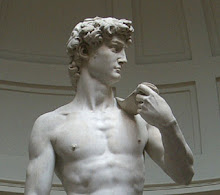For centuries, historians have grappled with the idea that there is an engine that drives the inexorable flow of history. Many believe there is one but is too complicated for the human mind to grasp. Others doubt that one even exists. But regardless of your opinion on the matter, the undeniable fact remains that there is a relationship between the overall social mood and events, and how these two influence the trajectory of history.
Conventional wisdom states that the social mood is determined by external events: that happy, cheerful music makes people more optimistic, and epidemics cause people to become fearful. But the intriguing new science of Socionomics dictates that the conventional wisdom has the casual relationship backwards: that it is the social mood that dictates events. Moreover, the relationship between mass human emotion and various trends such as fashion, music, epidemics, is far stronger than anyone anticipated. Consider this graph, for example:
Music buffs will notice that optimistic, upbeat music was popular during Bull markets (periods when the stock market goes up) and rough, angry, pessimistic music was popular during Bear markets ( periods when the stock market goes down). When the Stock market reached its peak in 2000, Britney Spears, Nsync and the Backstreet boys had number.1 albums. Unsurprisingly, the Stock market crash that followed the Tech boom made social conditions ripe for the emergence of rough, bearish bands like Linkin Park, Poppa Roach, and Limb Bizkit. And the latter two bands suffered a decline once the stock market rose in 2003-2007. In that period, positive social mood spawned the appearance and popularity of happy, upbeat bands. By 2004 hip hop outsold both pop and rock. Every no.1 song on Billboard singles that year went to either a hip hop or an R&B artist, marking the first time this has happened in nearly 50 years. Soon afterwards, Walt Disney launched the groups Jonas Brothers and Miley Cyrus. Popular music maintained a positive tone in 2006 with hits like Justin Timberlake’s “Sexback”, Rihanna’s “SOS” Fergie’s “London Bridge” and Chamillionaire’s “Ridin.”
But music is not the only thing affected by social mood; fashion is as well. It is a well-documented trend that short skirts accompany bull markets, while skirts that fall closer to the floor are in style during bear markets. Here is a graphic illustration:
It doesn’t take a genius to figure out that with this correlative knowledge at hand, fashion designers and Music groups can predict what the next trendline will be, and use it to their advantage.
But such correlations are not solely confined to the fashion and music industries. Comics, too, shift in character according to changes in the social mood:

Bull market characters tend to be happy, carefree, heroic, frivolous and not sexually objectionable. Bear Market characters tend to be more sexually scandalous, mean, and somber.
Lets start at the beginning. The roaring 20’s, which witnessed a sky high bull market and tremendously optimistic mood, gave birth to Mickey Mouse. Mickey’s personality was carefree and prank-playing, representing the fun people have during bull markets. However, during the depths of the depression in 1932, social pressure caused Disney to change the character of its mouse. The frivolity was gone, and seriousness and menace fill the void. Instead of Mickey pulling pranks, he was now dealing with nightmares about Pluto being abducted, a doctor conducting a cruel experiment, and being chased by a saw blade. But once the pessimism of the Great Depression subsided, Mickey’s original personality made its dramatic comeback.
Interestingly, the concept of Natural Selection, usually applied to biological organisms, can be applied here. Felix, unable to change to the bearish environment, faded into obscurity during the depression. There have been many attempts to revive the figure, in 1936, 1958, 1991 and 1995, all in bull market times, but only to be swept away by the bear.
So proven is this overall correlation that it can be seen over almost a century:

Another way tastes of the social air blossom comic characters is their level of cuteness and grotesquness. Bull market characters are round and cute while bear market characters are sharp and grotesque. As the example of Woody Woodpecker shows:

As it happens, the social mood affects much more than these three things. It affects car muscleness, the health of the economy, unrest, riots, scandals and almost everything. Even Epidemics are affected by the social mood, more so than the other way around. Many people think that mass epidemics imbed fear, but it would actually be more accurate to say it is fear that causes epidemics.
Now that we have devoted so much attention to how mass human emotion affects external events, what drives the social mood? Are there patterns to the way social mood ebbs and flows? If we can answer that question, then we could finally solve the problem of history’s hidden engine. But that is a topic for another article.
None of this is original material, as it is the work of many socionomic and Elliot Wave theorists. Robert Prechtor is the foremost figure among them.

